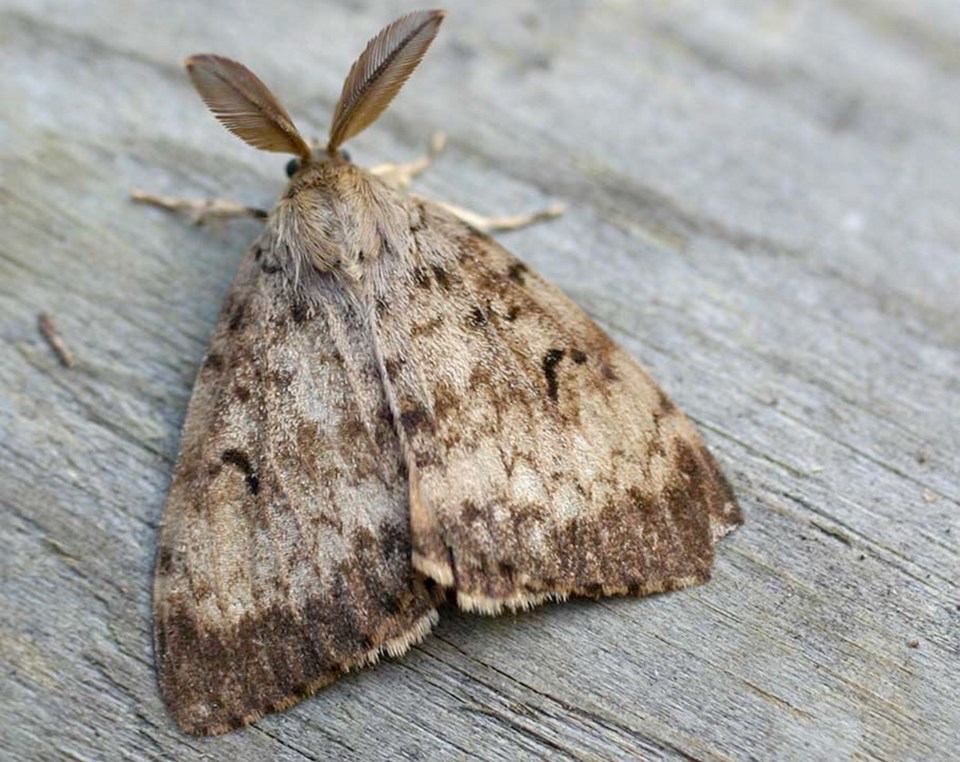Aircraft over Elk Lake and Bear Hill Regional Park on Thursday morning were applying the first spraying of pesticides meant to eradicate invasive gypsy moths.
About 186 hectares in Saanich were sprayed between 5:30 and 7:19 a.m. Second and third treatments are tentatively scheduled for May 31 and June 12, weather permitting.
The Ministry of Forests, Lands and Natural Resource is trying to eradicate a growing population of gypsy moth. The caterpillars’ diet of leaves damages forests, farms and orchards. “If left untreated, the moth could spread to new areas of the province via vehicles, containers, rail and Swartz Bay ferry terminal,” the ministry said.
The decision to use the pesticide Btk was made after three years of trapping moths. It was determined that aerial spraying “is the only practical means of applying the product due to the size and terrain of the treatment area,” the Environment Ministry said.
Btk, a variety of Bacillus thuringiensis bacterium found naturally in the soil, causes illness in insect larvae, including caterpillars of pest species such as gypsy moth, spruce budworm and cabbage looper. It has been used for about 30 years and has no known toxic effects on humans, other mammals, plants, birds, fish, honeybees or other beneficial insects, according to the ministry.
Gypsy moth caterpillars
• Are hairy and have distinctive rows of paired red and blue bumps along their backs when fully grown.
• Are big — when fully grown, they are about the size of your little finger.
• Hatch in early May and grow through the summer.
• Do not form tents of webbing in trees.
• Rarely feed on coniferous trees, except when in large populations and other food is scarce.
— Government of B.C.



